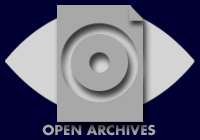The Significance of The Cat as a Character with Moral Ambiguity in Neil Gaiman's Coraline
Namira Azzahra(1*), Rahmawan Jatmiko(2)
(1) Universitas Gadjah Mada
(2) Universitas Gadjah Mada
(*) Corresponding Author
Abstract
This research analyzes the cat in Coraline as a character with moral ambiguity in children’s literature. This study used new criticism theory, focusing on the formal elements which are the plot of the story and the cat’s character and its characterization to analyze the cat’s role and its significance towards Coraline. By applying Janet Burroway’s character presentation methods, this research aims to analyze how the cat with moral ambiguity influenced Coraline in deciding her decisions and choice. This research also discusses the relationship between the cat with Coraline in order to know how deep Coraline’s trust towards the cat to know the significance of a character with moral ambiguity and to investigate the cat’s role in the novel by analyzing the plot of the story. The result shows that even though the cat has a bad and annoying attitudes towards Coraline, after she met the cat and having several conversations, there is a change in her mind about the point of view of the Other World so she could decide what to do in order to save not only herself but also the cat, her parents and the ghost children’s souls from the Beldam. The existence of a character with moral ambiguity is unusual in children’s literature which mostly have obvious narratives about polarity; nevertheless, the cat’s presence in Coraline has a significant role because not only guiding Coraline but also an illustration of not every people with bad attitude is an evil people; even though the cat has moral ambiguity in its character it accommodated Coraline in escaping from the Beldam.
Full Text:
PDFReferences
Abrams, M. H. (1999). A Glossary of Literary Terms Seventh Edition. Earl McPeek.
“Ambiguity.” Merriam-Webster.com Dictionary, Merriam-Webster, https://www.merriam-webster.com/dictionary/ambiguity. Accessed 14 Apr. 2022.
Burroway, J., Stuckey-French E, and Stuckey-French N. (2019). Writing Fiction: A Guide to Narrative Craft (Tenth Edition). Chicago and London: The University of Chicago Press.
Carroll, L. (1998). Alice’s Adventures in Wonderland. Chicago: VolumeOne Publishing.
Churchill, L. R. (1982). The Teaching of Ethics and Moral Values in Teaching: Some Contemporary Confusions. The Journal of Higher Education, 53(3), 296-306
Gaiman, N. (2012). Coraline 10th Anniversary Edition. Harper Collins.
Handayani, M. V. (2016). Moral Values Revealed by The Major Character in Solving Her Conflict in Neil Gaiman’s Coraline [Undergraduate thesis, Sanata Dharma University]
Hickman, M. B. & McIntyre J. (2012). Rereading the New Criticism. The Ohio State University Press.
Julia. (2019). The Influence of Parents’s Treatment toward Coraline Emotional Security in Neil Gaiman’s Coraline [Undergraduate thesis, Sanata Dharma University]
Krakowiak, K. M. & Tsay-Vogel, M. (2013). What Makes Characters’ Bad Behaviors Acceptable? The Effect of Character
Motivation and Outcome on Perception Character Liking, and Moral Disengagement. Mass Communication and Society. Doi:10.1080/15205436.2012.690926
Krakowiak, K. M. & Tsay-Vogel, M. (2014). The Dual Role of Morally Ambiguous Characters: Examining the Effect of Morality Salience on Narrative Responses. Human Communication Research. doi:10.1111/hcre.12050
McGregor, Sue L.T. (2014). Consumer Moral Ambiguity: The Gray Area of Consumption [McGregor Monograph Series No 201401]. Seabright, NS: McGregor Consulting Group. https://www.consultmcgregor.com/documents/publications/moral_ambiguity_and_consumption.pdf
Nodelman, P. (2008). The Hidden Adult. The John Hopkins University Press.
Schers, J. (2016). “Something Called Protective Coloration”: The Uncanny in Children’s Literature, A Case Study of Neil Gaiman’s Coraline [Undergraduate thesis, Utrecht Universit
y]
Siikala, Anna-Leena. (2002) Myth and Mentality: Studies in Folklore and Popular Thought. Helsinki: Finnish Literature Society.
Tyson, L. (2006). Critical Theory Today: A User Friendly Guide, Second Edition. Routledge.
Vogl, S. (1982). Animals and Anthropomorphism in Children’s Literature, Transaction of Wisconsin Academy of Sciences, Arts, and Letters vol. 70, 68-72.
Article Metrics
Refbacks
- There are currently no refbacks.
Copyright (c) 2023 Namira Azzahra, Rahmawan Jatmiko

This work is licensed under a Creative Commons Attribution-ShareAlike 4.0 International License.
Lexicon Office
| English Department Faculty of Cultural Sciences, Universitas Gadjah Mada Soegondo Building, 3rd Floor, Room 306 Yogyakarta, Indonesia 55281 Telephone: +62 274 513096 Email: lexicon.fib@ugm.ac.id ISSN: 2746-2668 (Online) |
 LEXICON is licensed under a Creative Commons Attribution-ShareAlike 4.0 International License. |
Lexicon is indexed in












